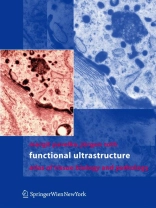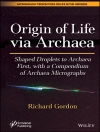The period between 1950 and 1980 were the golden It also provides unique insights into how pathological years of transmission electron microscopy and pro- processes affect cell organization. duced a plethora of new information on the structure of This information is vital to current work in which cells that was coupled to and followed by biochemical the emphasis is on integrating approaches from p- and functional studies. TEM was king and each micro- teomics, molecular biology, molecular imaging and graph of a new object produced new information that physiology, and pathology to understand cell functions led to new insights on cell and tissue organization and and derangements in disease. In this current era, there is their functions. The quality of data represented by the a growing tendency to substitute modern light mic- images of cells and tissues had been perfected to a very scopic techniques for electron microscopy because it is high level by the great microscopists of the era including less technically demanding and is more readily available Palade, Porter, Fawcett, Sjostrand, Rhodin and many to researchers. This atlas reminds us that the infor- others. At present, the images that we see in leading tion obtained by electron microscopy is invaluable and journals for the most part do not reach the same techni- has no substitute.
Cuprins
The Nucleus.- Structural Organisation of a Mammalian Cell.- The Cytoplasm: The Secretory System.- The Cytoplasm: The Endocytic System.- The Cytoplasm: Lysosomes and Lysosomal Disorders.- The Cytoplasm: Autophagocytosis.- The Cytoplasm: Mitochondria and Structural Abnormalities.- The Cytoplasm: Peroxisomes and Peroxisomal Diseases.- The Cytoplasm: Cytosolic Particles.- The Cytoplasm: Cytoskeleton.- The Plasma Membrane and Cell Surface Specialisations.- Cell-Cell and Cell-Matrix Contacts.- Secretory Epithelia.- Resorptive Epithelia.- Sensory Epithelia.- Stratified Epithelia.- Epithelia of the Respiratory Tract.- Urothelium.- Endothelia and Glomerulus.- Connective Tissue.- Cartilage.- Bone.- Skeletal Muscle.- Cardiac Muscle.- Smooth Muscle.- Nerve Tissue.- Blood.












